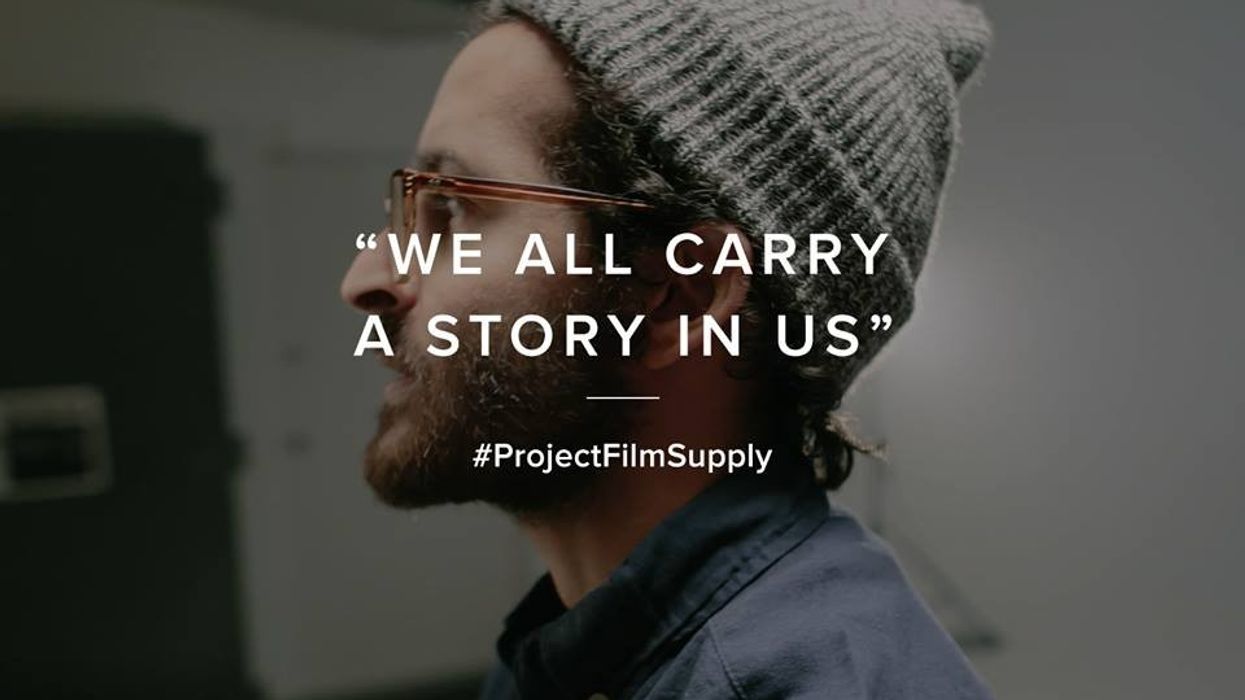How to Craft the Perfect Pitch for Project Film Supply & Make Your Dream Movie a Reality

If a great pitch is all that stands between you and thousands of dollars in film equipment and software, you'd probably want to get really good at pitching, right? As you might know, The Music Bed is offering just such a handsome booty to the filmmaker who sends in the best film idea to their contest Project Film Supply (of which we're also a sponsor). In other words, the best pitch wins. But, how can you ensure that yours is a $50K pitch? Here are a few thoughts from The Music Bed on what they think about when scouring submissions, and what makes a pitch really stand out.
Even if you're not planning on participating in The Music Bed's contest, the tips they share are pretty universal. (But, you should totally go check out Project Film Supply, because dat prize tho.) Pitching is perhaps one of the more important things you can learn how to do as a filmmaker. It's the method with which to showcase the vision of your film to others, and if your vision isn't being seen correctly, chances are your film won't be seen either -- at all.
Below are the areas that TMB says, if done well, make a great pitch:
The Synopsis
One of the main issues I see in not only other people's synopses, but my own, is that they're too fluffy. They offer too much non-essential information and not enough vital information, like the genre and locations. We all know that our synopses should be 1. compelling, drawing the reader (or listener) in naturally, 2. clear, so nobody's standing there lost in the dizziness of your explanation, and 3. efficient, because no one wants to listen to a pitch all day long. So, essentially you've got to ask yourself, "What is the most interesting, coherent way I can get my story across in the least amount of words possible?"
Well, a good place to start building upon an entire synopsis is the logline, which is basically a stripped down synopsis condensed into 25 words or so. (If you want to learn how to write one, check this out.) TMB says that it'd be a good idea to start your synopsis with your logline and go from there. They've shared an example of a synopsis they thought was "thorough and clear".
Road Kings is a film about four friends, documenting their lifestyle as traveling hitchhikers. Whether they get from Point A to Point B by pavement road or railroad, they’re always about the journey. People often stop to ask them, “Why do you live this way?” and they simply respond, “Why not?” They’ve suffered through illness, having belongings stolen or lost, and even the occasional lack of food and water, but they wouldn’t trade it for the world. In just a few short months, they have already been to three countries and twenty states — but the most impressive and inspiring aspect of their story is how they’re making friends and building relationships along the way. Each stop finds them meeting new people who share similar — and sometimes completely different -- stories as themselves.
The Mood Board
I'm sure we've all created a "mood board" before -- for every screenplay I start, I make its own Tumblr so I can start putting images together that capture the tones, palette, and atmospheres I'm going for. Making one of these collages is a part of submitting to Project Film Supply, too, and TMB shares several points on what to include in your Mood Board in order to "transport people into your world."
- Location
- Time Period
- Character Styling/Mood/Emotions
- Wardrobe Considerations
- Color Palette/Tones
- Tempo
- Closeup and Wide Shot Details
- Set Styling and Lighting
Below is the mood board from The Music Bed’s production packet for their Project Film Supply film.
The Video Pitch
If you're more of a visual storyteller and you want to showcase that, you have the option to include a video pitch when submitting to Project Film Supply, which TMB describes as "a mood board on steroids". If you're interested in creating one, though it is not mandatory, TMB explains that they should "establish not only a visual tone, but a musical tone and an emotional tone." They elaborate:
While the video pitch might not be able to tell your whole story idea, it can usually give a glimpse of where your characters are and where they’re heading. Your video pitch should leave no question in the viewers’ minds about whether or not this is a project they connect with and if they want to be a part of it.
Again, these tips not only apply to Project Film Supply contestants; they're great rules of thumb for any filmmaker who plans on making a pitch at any point in their career. Actually, quite honestly, having a good pitch helps your project in the long run even if you never share it with investors, because the sheer act of fleshing it out and polishing and centering your story only makes it clearer in your own head and easier to work with as you go into production.
For those of you interested in submitting an idea to Project Film Supply, head on over to the contest's website and do it!


 No Film School's coverage of
No Film School's coverage of 









